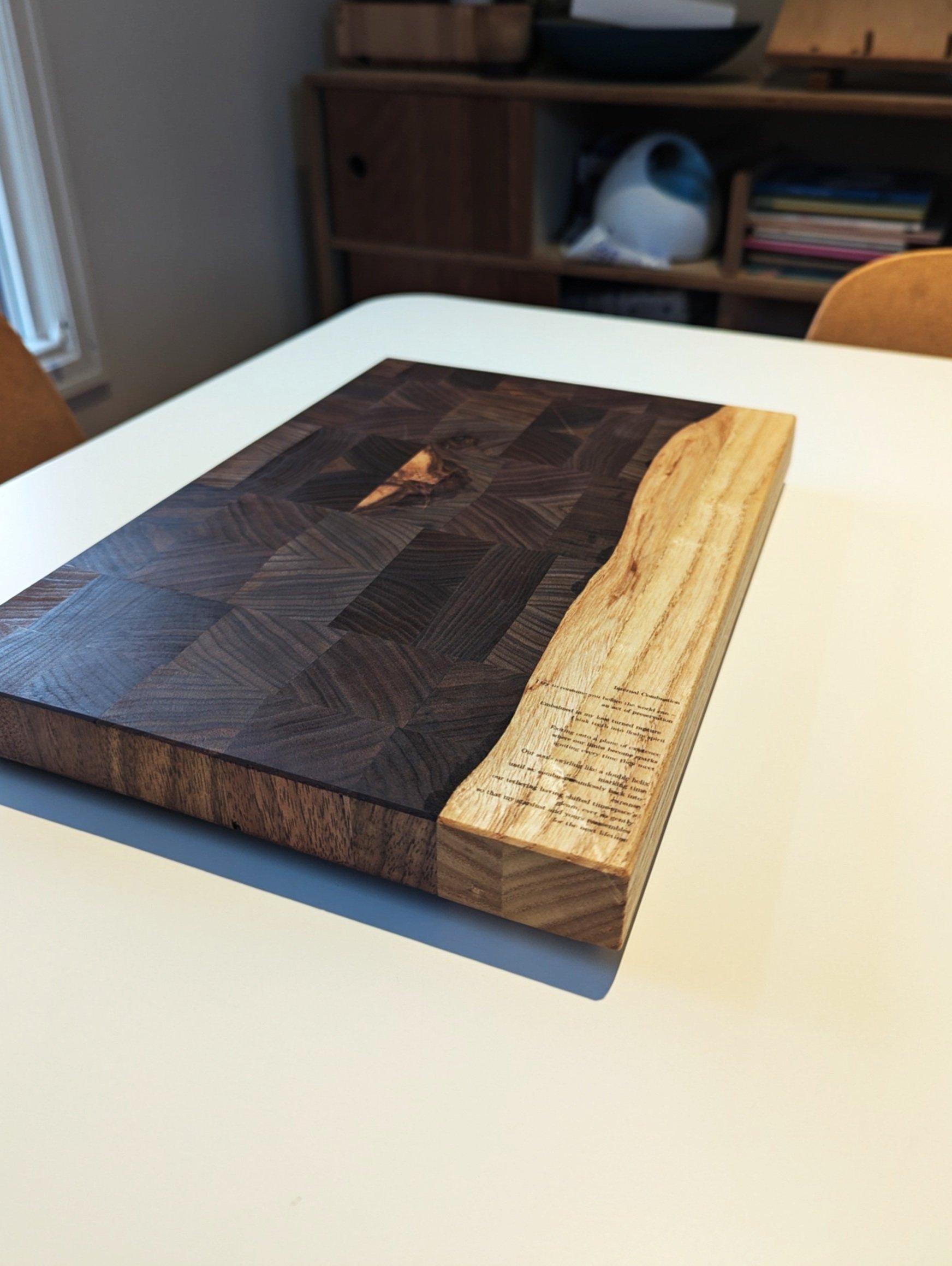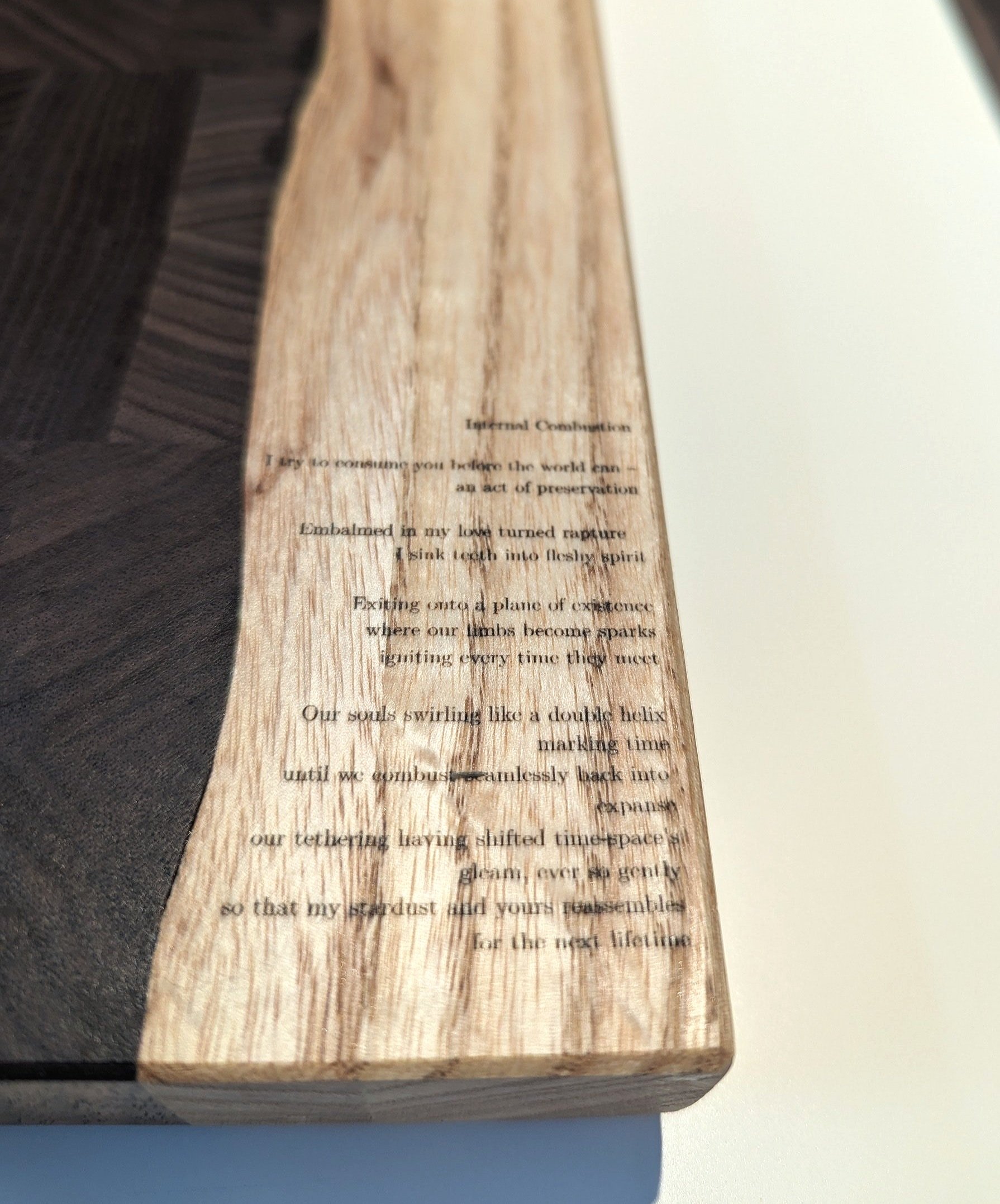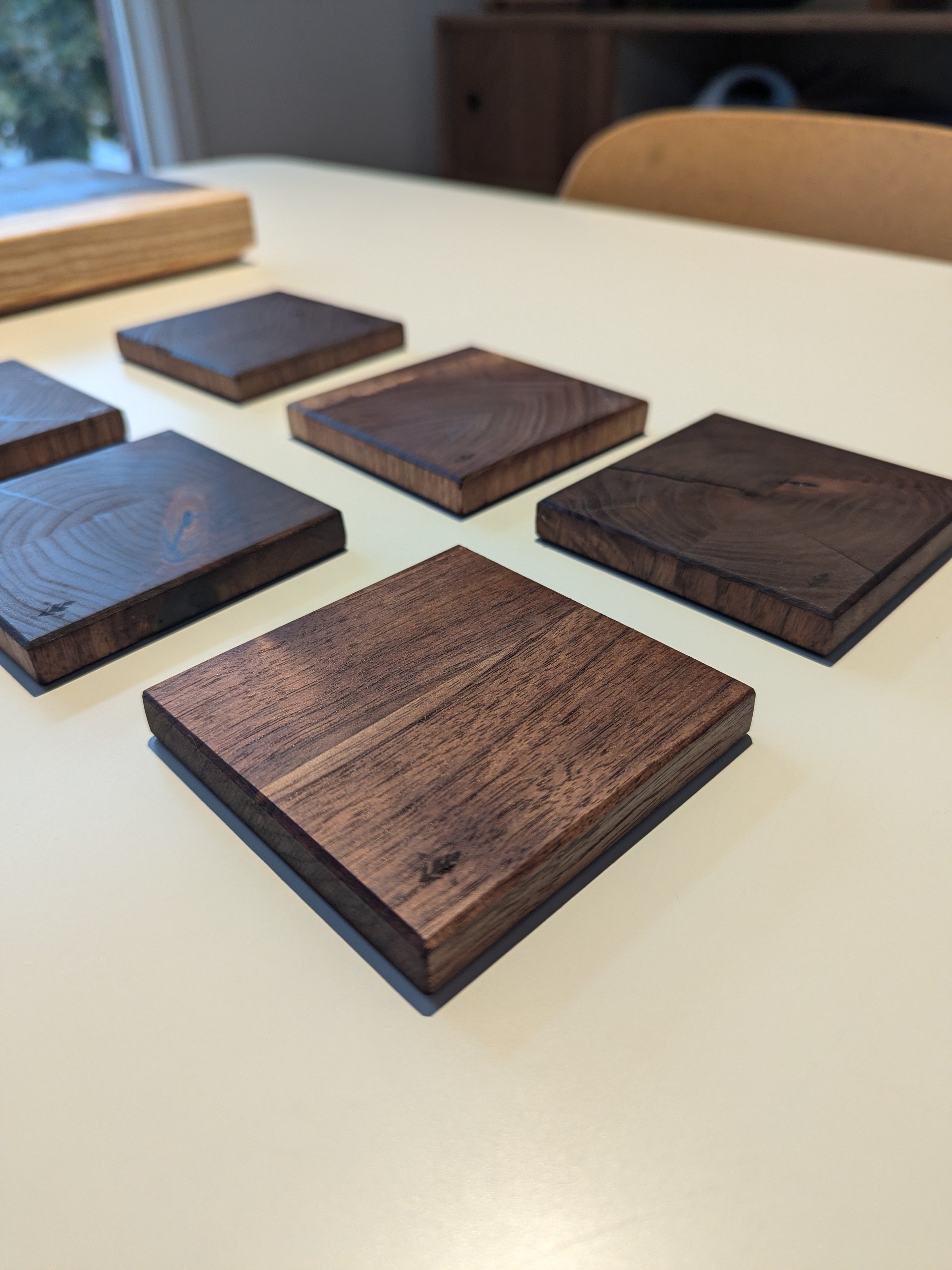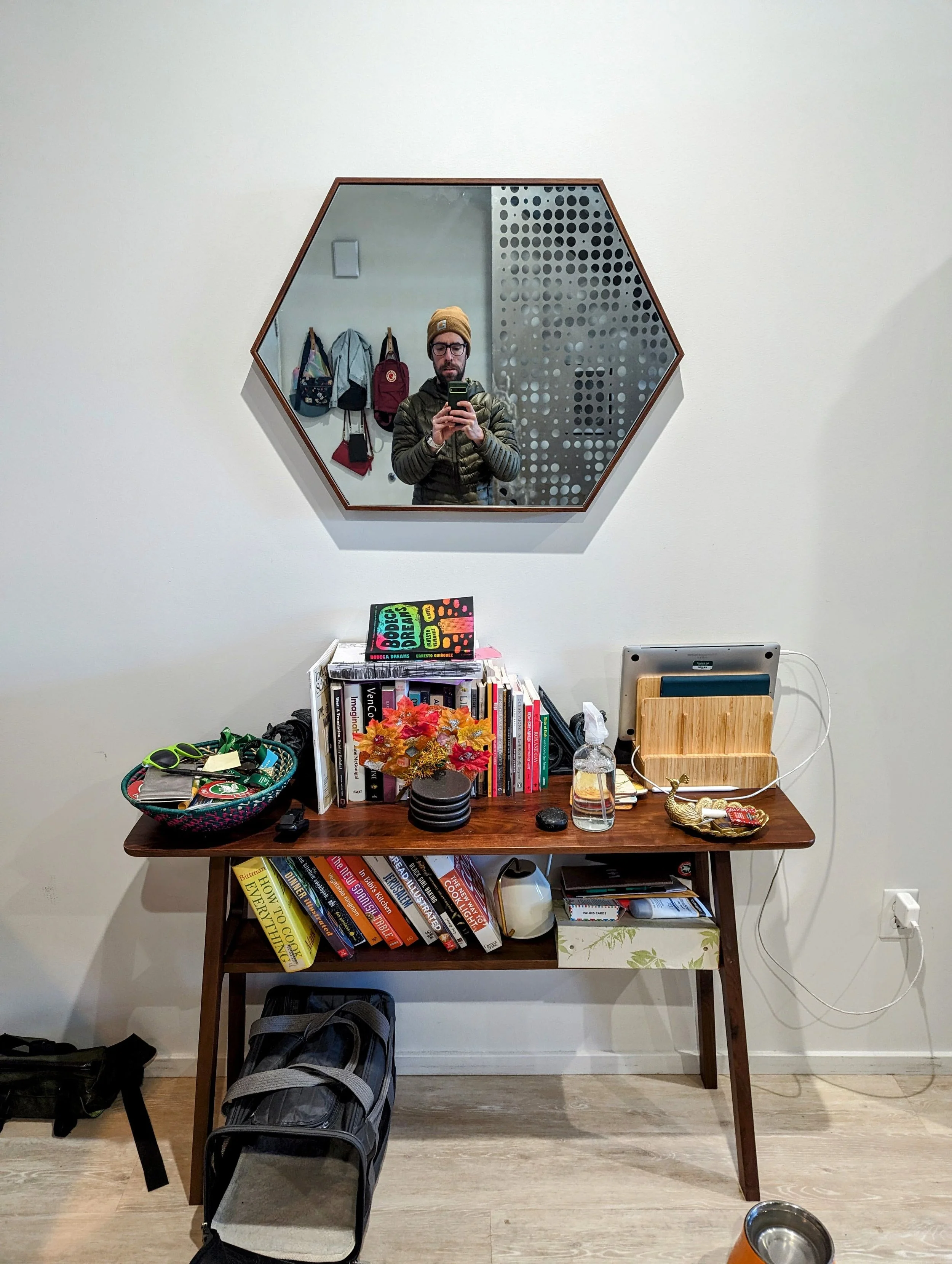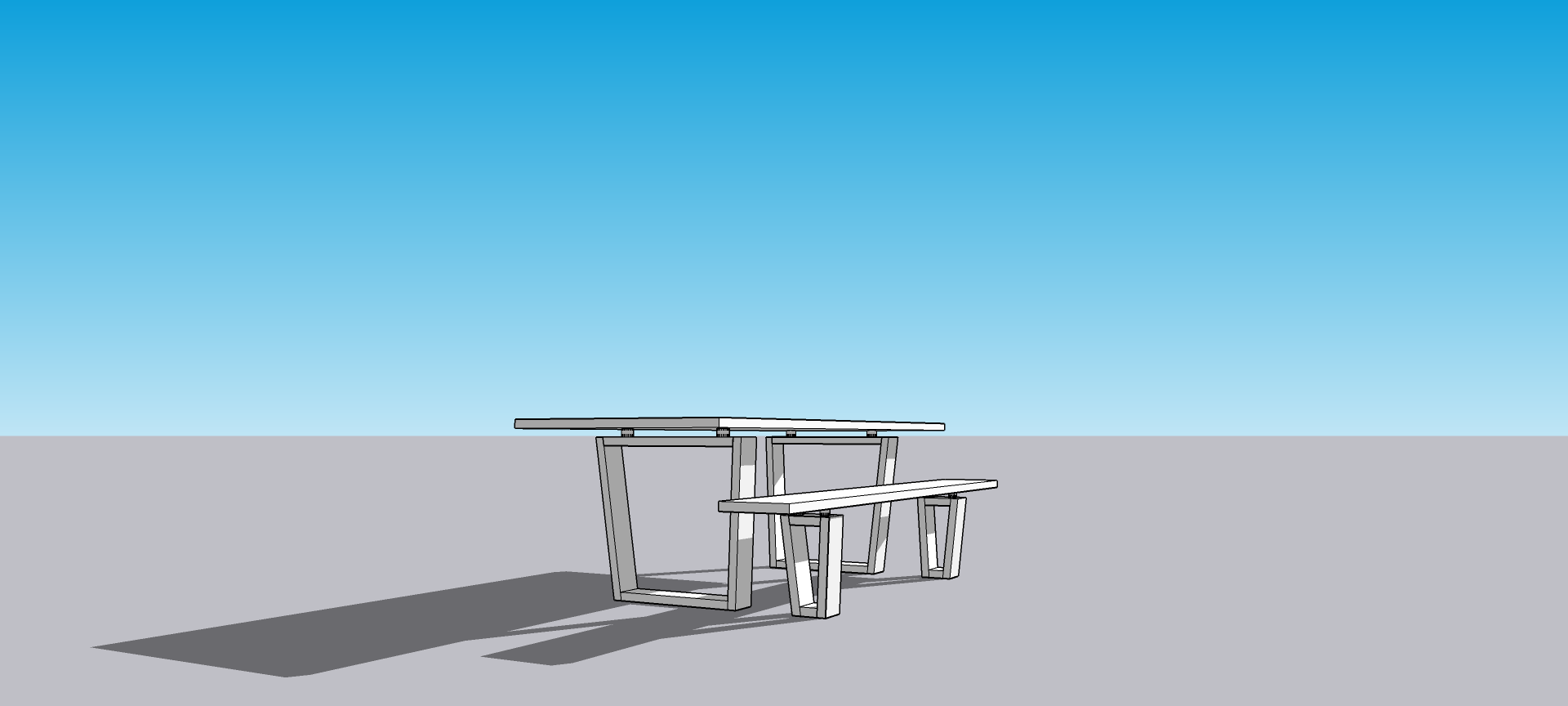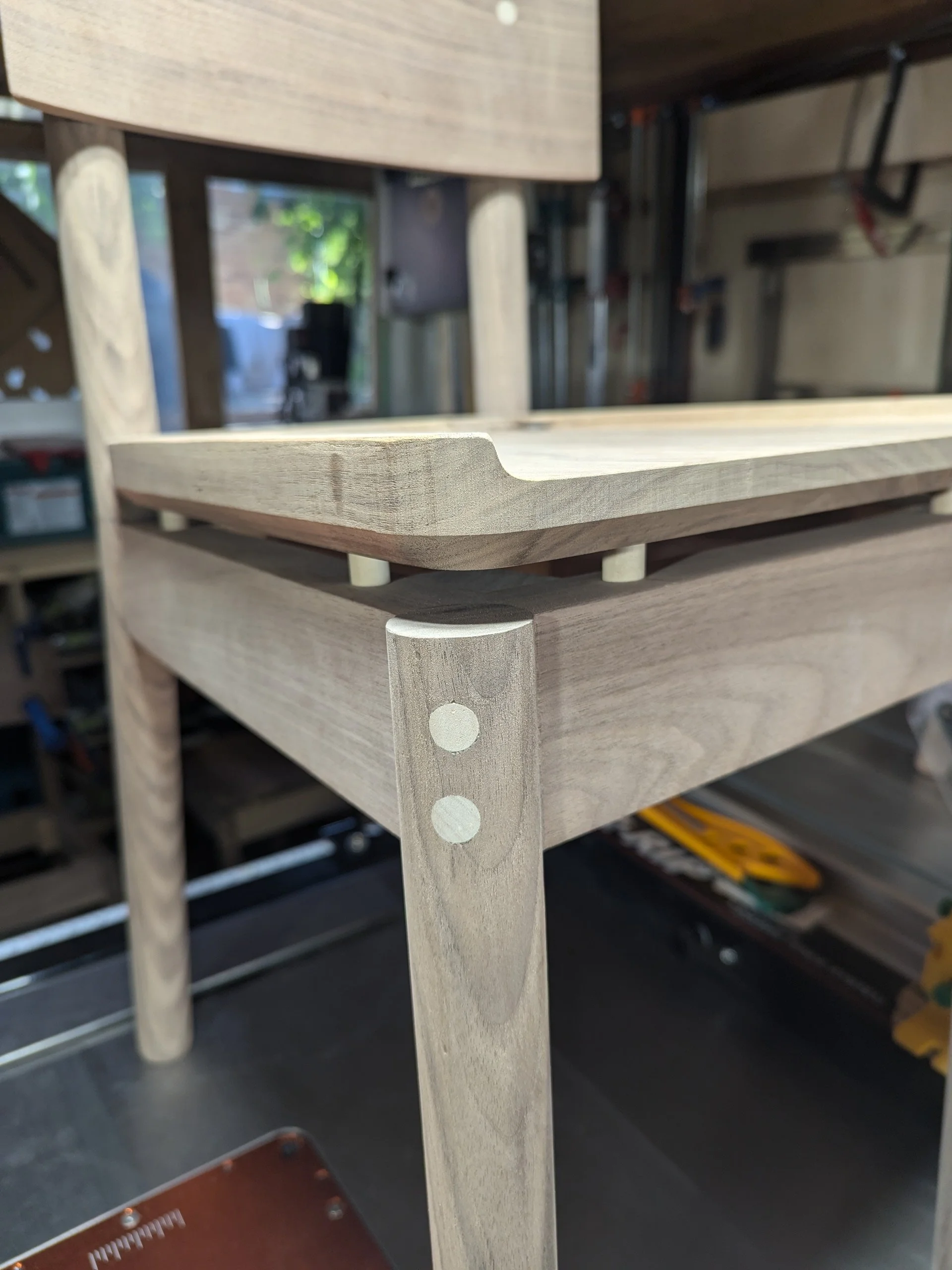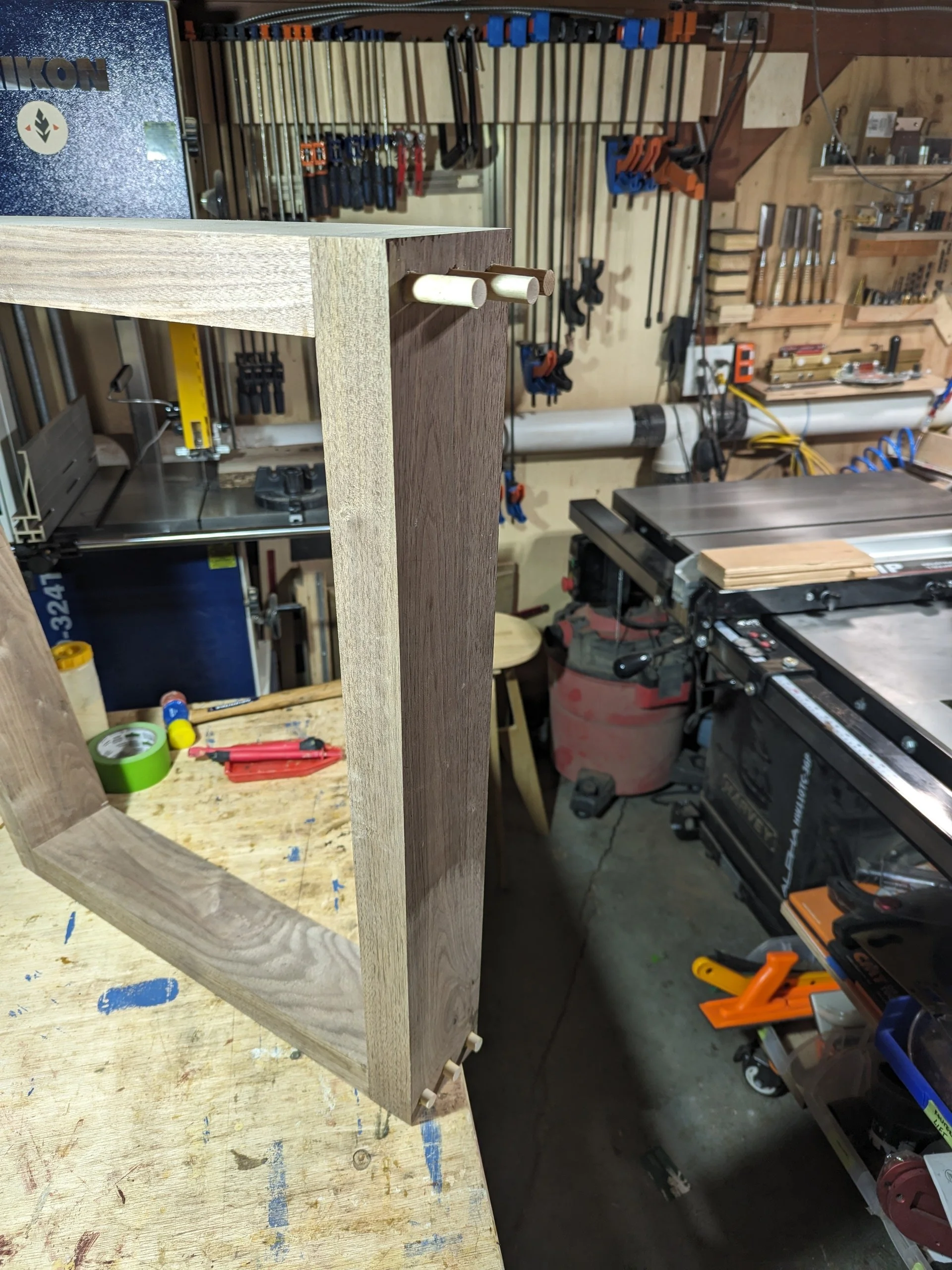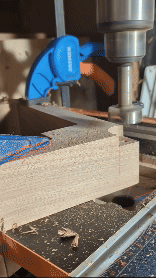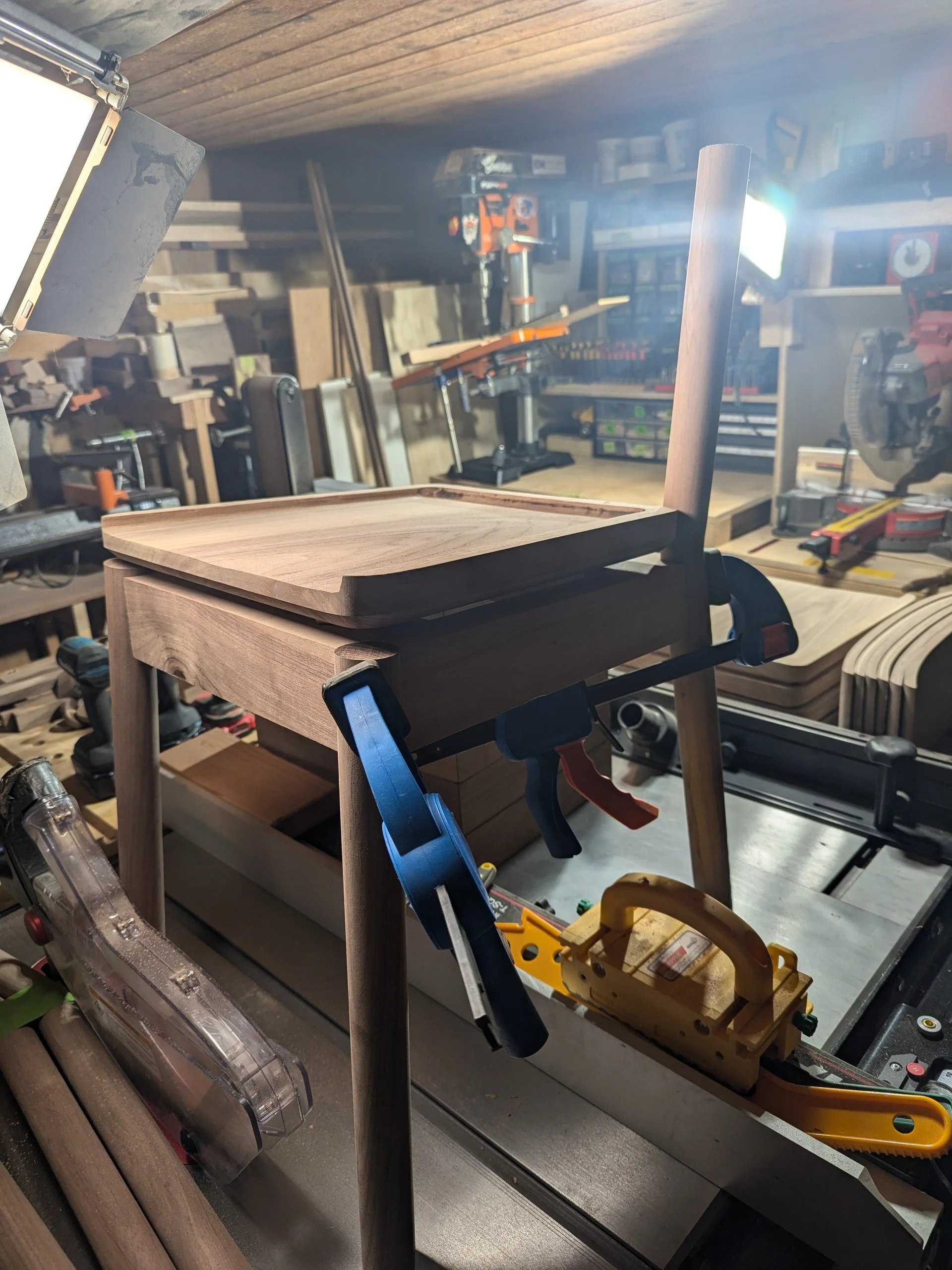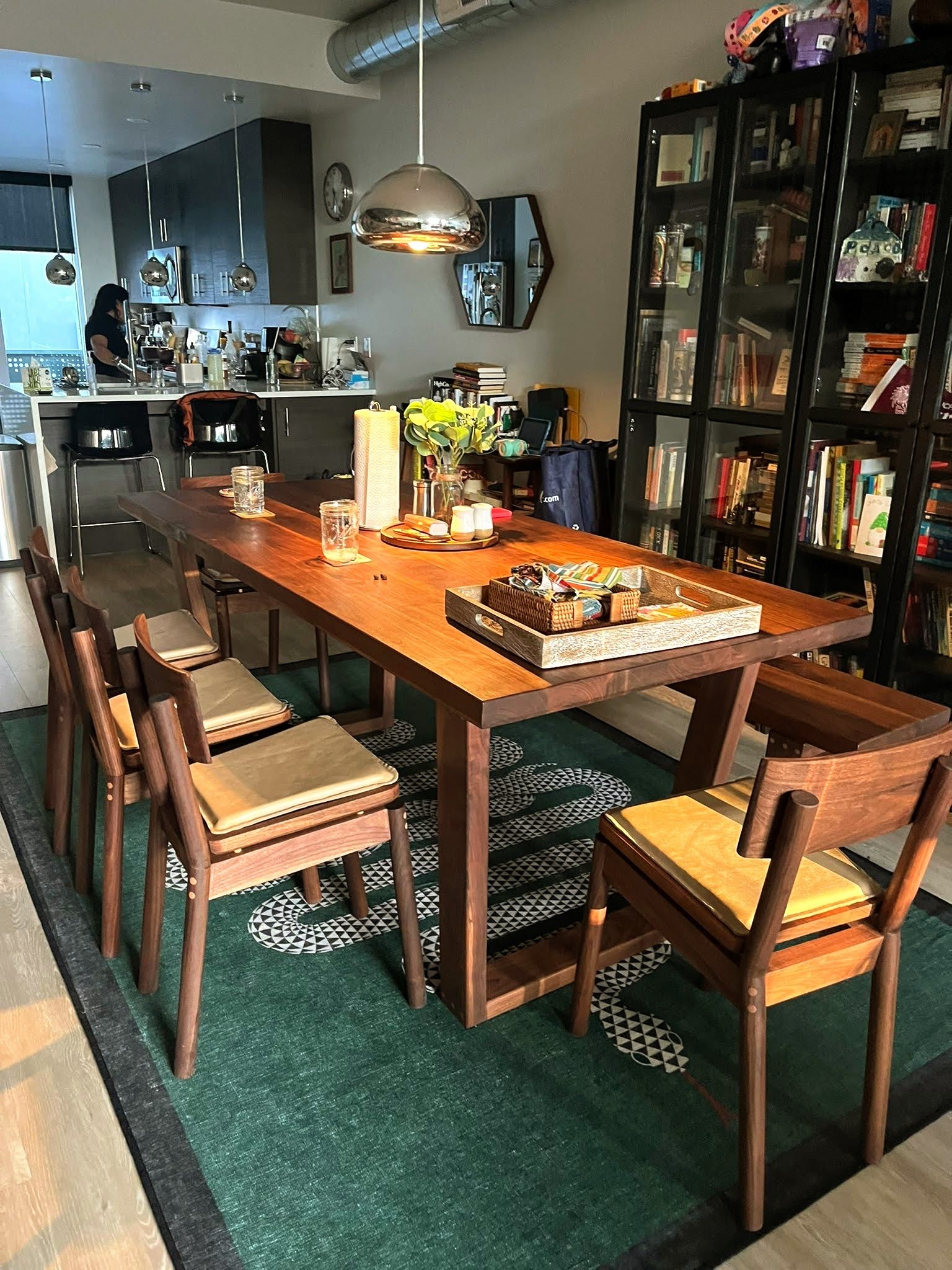
Aashna's dining room, with its sleek modernity and geometric elegance, was missing one key element: a dining table that could accommodate their love for hosting large family gatherings. The existing table, while charming, was too small for the space and failed to align with the room’s potential as a centerpiece for connection and style. The goal was clear—to design a dining set that comfortably seats 6-8 people, complements the home's modern aesthetic, and becomes a focal point for memorable dinners.
For the dining set, we drew inspiration from Le Corbusier’s iconic table design, where the tabletop appears to float above its legs. To achieve this, we used circular dowels to create the elevation, keeping the structure simple and intentional. The legs were designed as inward-angled trapezoids to balance the roundness of the dowels and the softness of the walnut wood with the sharper geometric lines. We started by focusing on the table and a matching bench, which replicated the table's design exactly, and decided to tackle the chairs later.
When it came time to design the chairs, we flipped the approach. The chair legs were fully round cylinders, echoing the dowels on the table, while the seat took on a trapezoid shape, and the backrest became a clean rectangle. This reversal kept things visually interesting but cohesive. To make sure the chairs worked seamlessly with the table, we elevated the seat height to align perfectly with the table's elevated top.
Chandani, Aashna’s mother, suggested we bring in some contrast, and she was absolutely right. We started by adding leather cushions to the chairs, which added warmth and texture. But we felt the set needed more. To push the design further, we decided to leave all the joinery visible. The birch dowels we used for the joinery points created a striking contrast against the walnut wood, highlighting the craftsmanship and tying the whole design together.
The result is a set that feels intentional and functional, with just the right amount of contrast and detail to stand out. It works beautifully as a centerpiece for the dining room and for the family gatherings it was designed to host.
The process started with the table. For the tabletop, the main focus was ensuring the walnut grain looked stunning and the joints between boards were seamless. This required careful selection of each piece of wood and meticulous attention to every detail. Each knot and imperfection in the wood was examined, filled, and smoothed to create a flawless surface that would serve as the visual anchor of the room.
For the legs, the priority was getting the angles just right—both visually and structurally. The trapezoid shape and inward angle had to feel balanced and natural to the eye while providing enough stability for the table’s size and weight. Achieving this meant making precise cuts and testing the alignment repeatedly until everything clicked. Once the top and legs were ready, the circular dowels were installed to elevate the tabletop, locking the design together in a clean and intentional way.
The bench followed the same approach, mirroring the table's design, but we ran into an issue during the build. The bench legs were initially too narrow, which affected stability. To solve this, we redesigned the legs, making them wider and more supportive while maintaining the trapezoid shape to ensure they still complemented the table. The result was a bench that felt both balanced and structurally sound.
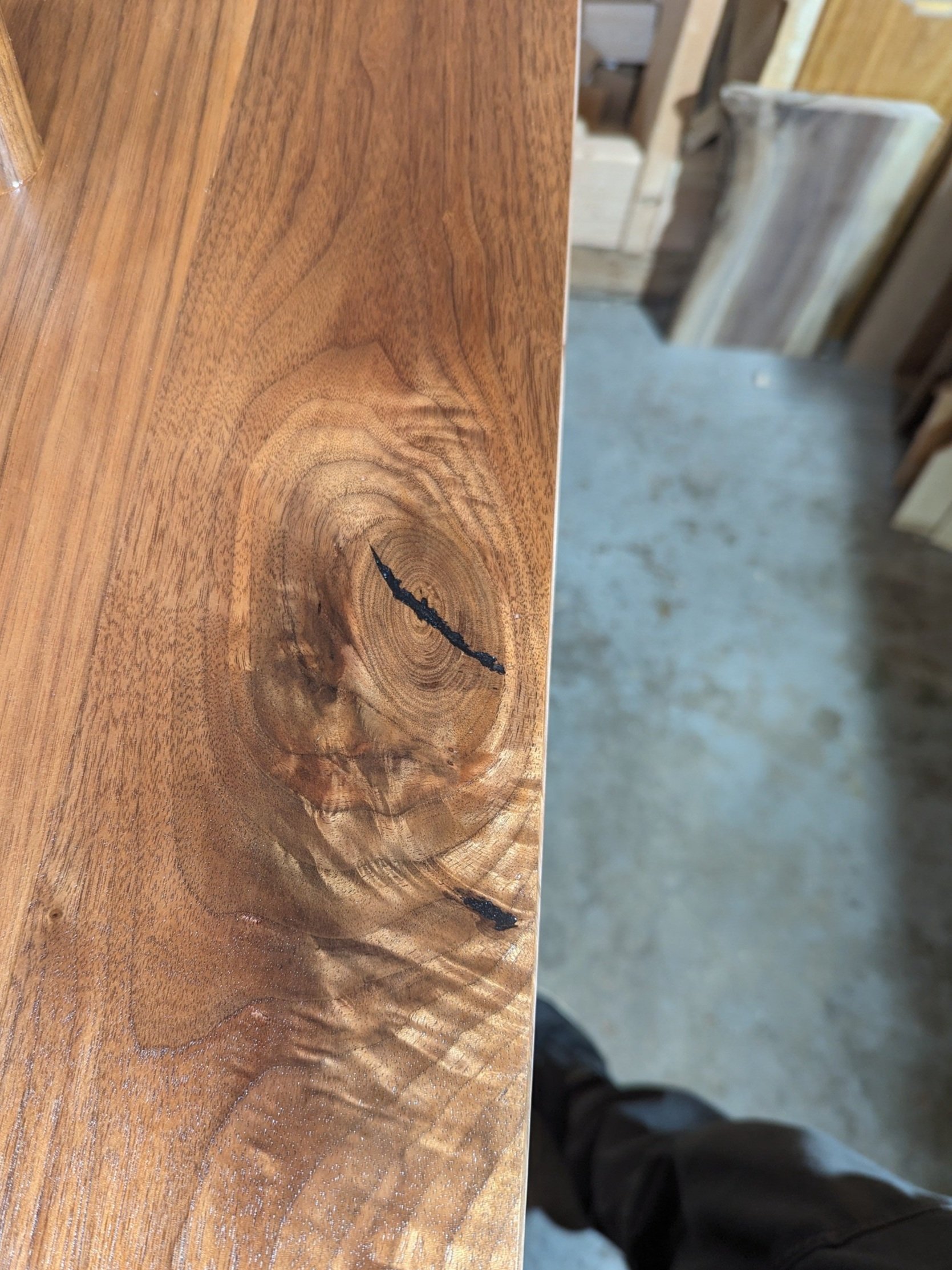

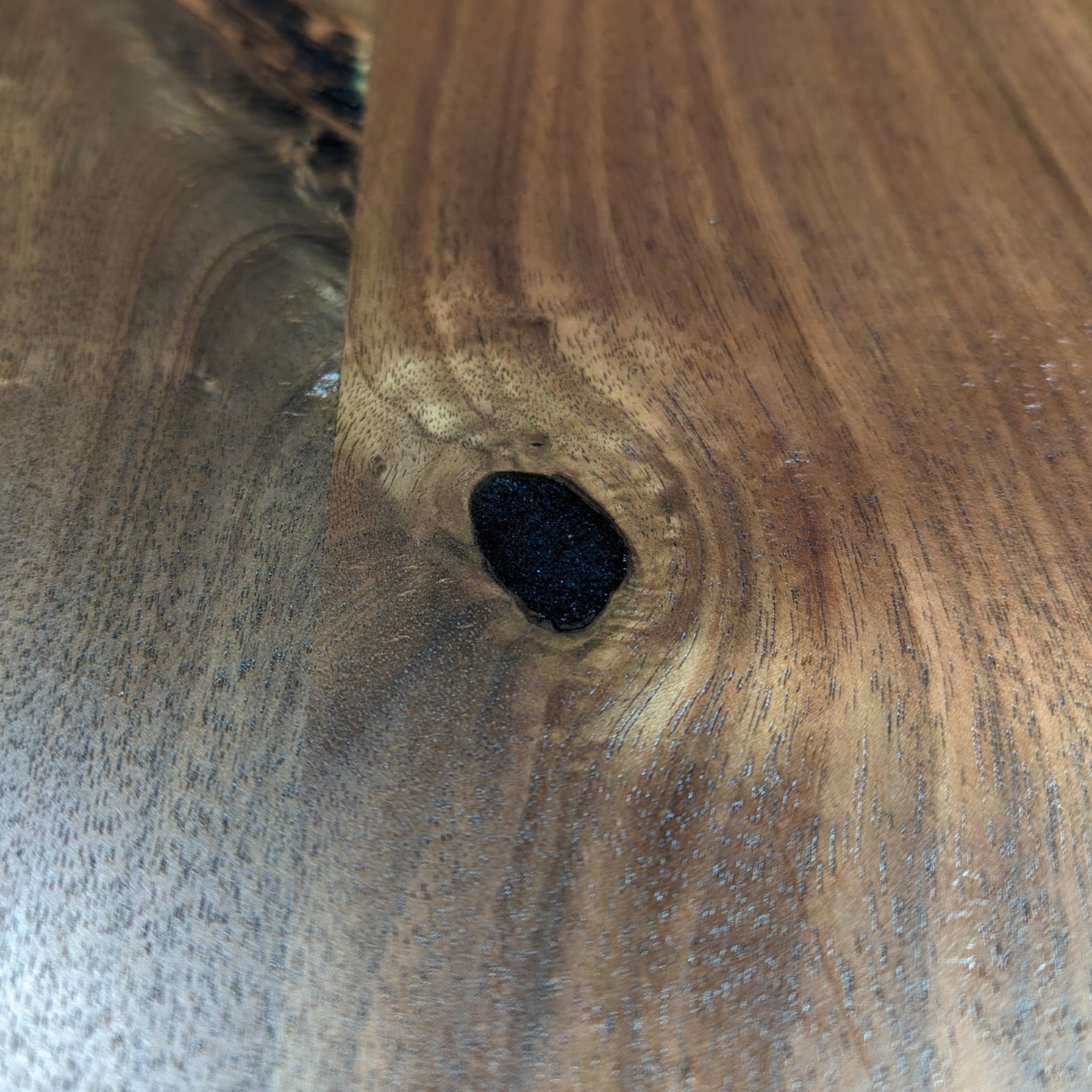
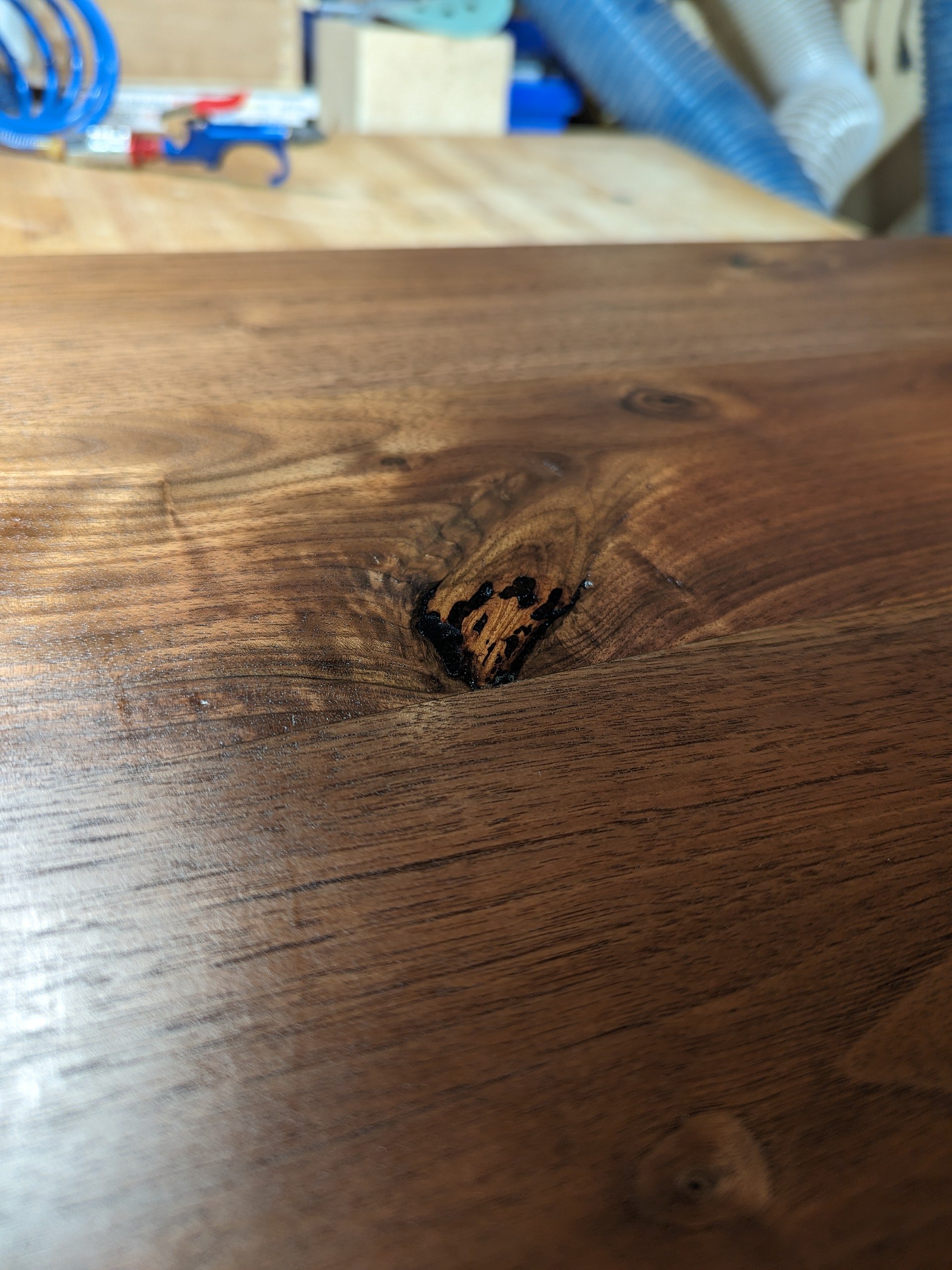
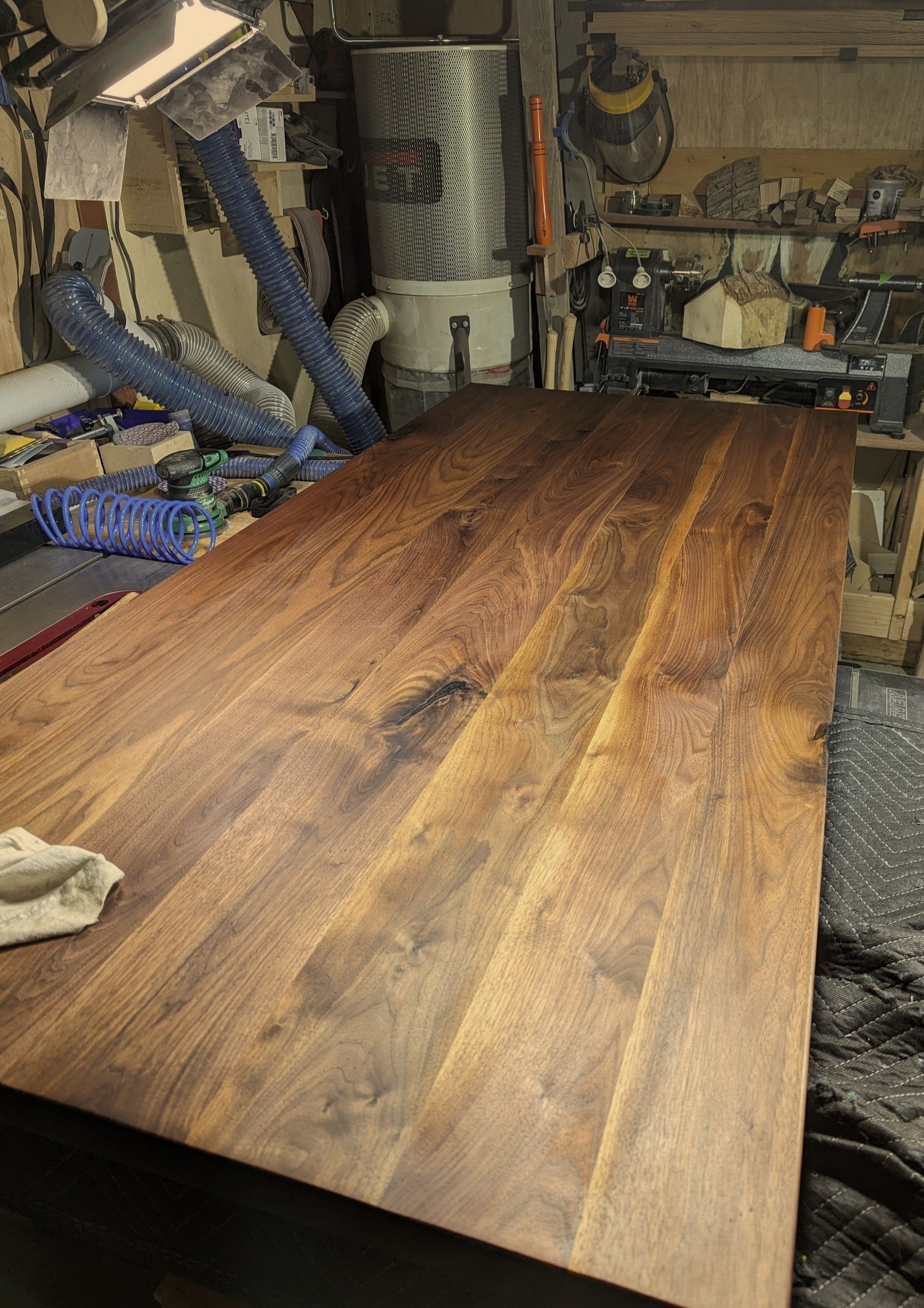
Next, we tackled the chairs, which brought their own challenges. The backrests involved laminating and bending layers of wood into form, a process that relied on a custom-built press (think panini press for wood). This technique ensured a smooth, clean curve that was both ergonomic and visually striking. The seats needed rounded corners to hold the cylindrical legs, requiring precision in shaping and fitting.
To ensure strength and stability, we used a ton of dowels throughout the chairs—no screws were involved. Every joint was reinforced with birch dowels, creating a solid, seamless structure that highlighted the craftsmanship. Each chair was individually assembled and carefully adjusted to ensure everything fit perfectly.
Once the pieces were constructed, we sanded everything smooth and applied a finish to the walnut, enhancing its natural grain and providing durability. The birch dowels were left raw to preserve their contrast with the darker walnut. For the chairs, leather cushions were custom-cut and secured, adding a layer of comfort and texture.
The final step was testing every piece for balance, comfort, and stability. Small adjustments were made to ensure the table, bench, and chairs worked together as a cohesive set. The visible joinery highlighted the craftsmanship, while the mix of materials and shapes tied the design together.
This wasn’t just about building furniture—it was about creating a set that would stand as the centerpiece for a family’s connection and gatherings for years to come.
To make the set truly personal, we added elements that tied it deeply to the family’s story. A custom fitting board was created with one of Chandani’s poems etched onto its surface. The final lines, “our souls swirling like a double helix / marking time / until we combust seamlessly back into expanse,” added a profound sense of connection and meaning to the piece. The poetry spoke to the continuity of relationships and moments—a fitting tribute for a dining set meant to anchor family gatherings.
We also crafted a set of matching coasters, designed with the same care and attention as the larger pieces. These small additions, though subtle, brought the project full circle, combining functionality with emotional resonance.
This wasn’t just a dining set. It became a canvas for memories, a space for shared moments, and a reflection of timeless bonds—marking time, just as the poem says, for lifetimes to come.


